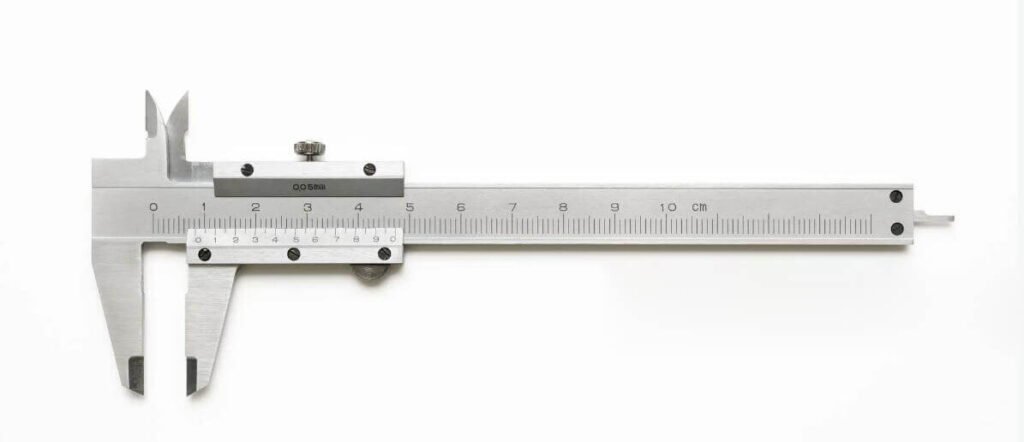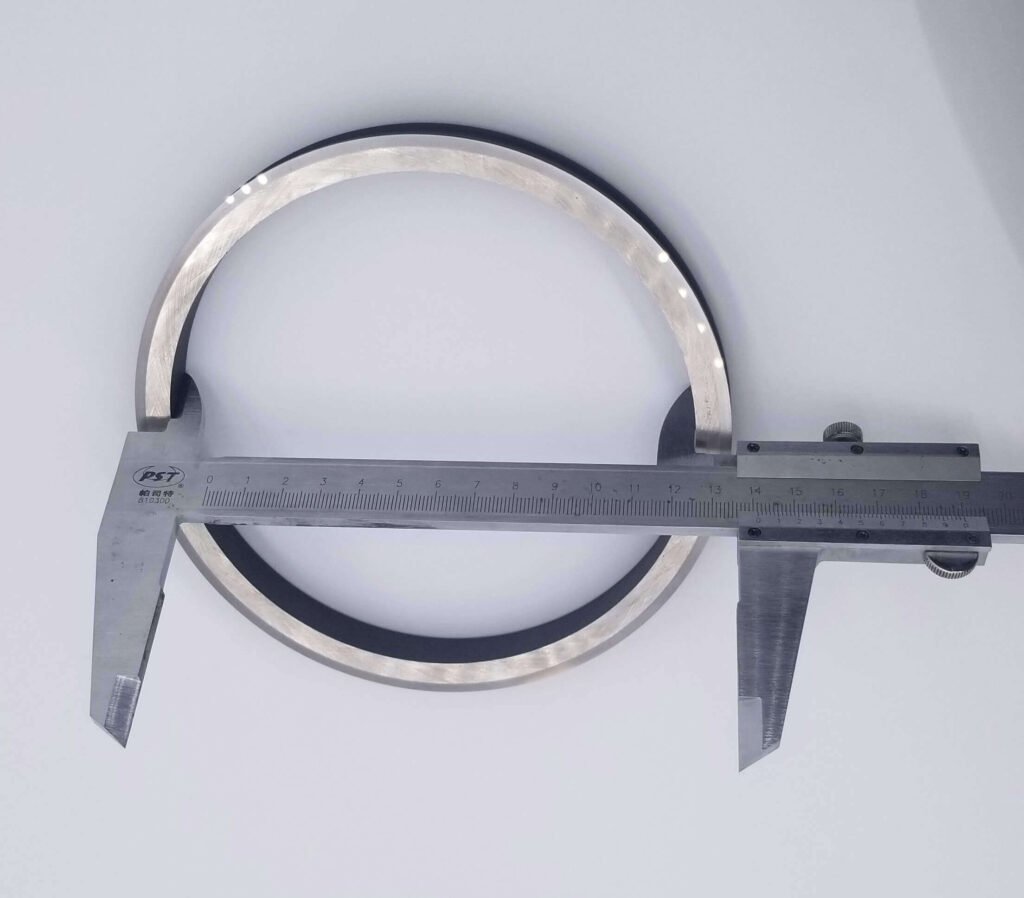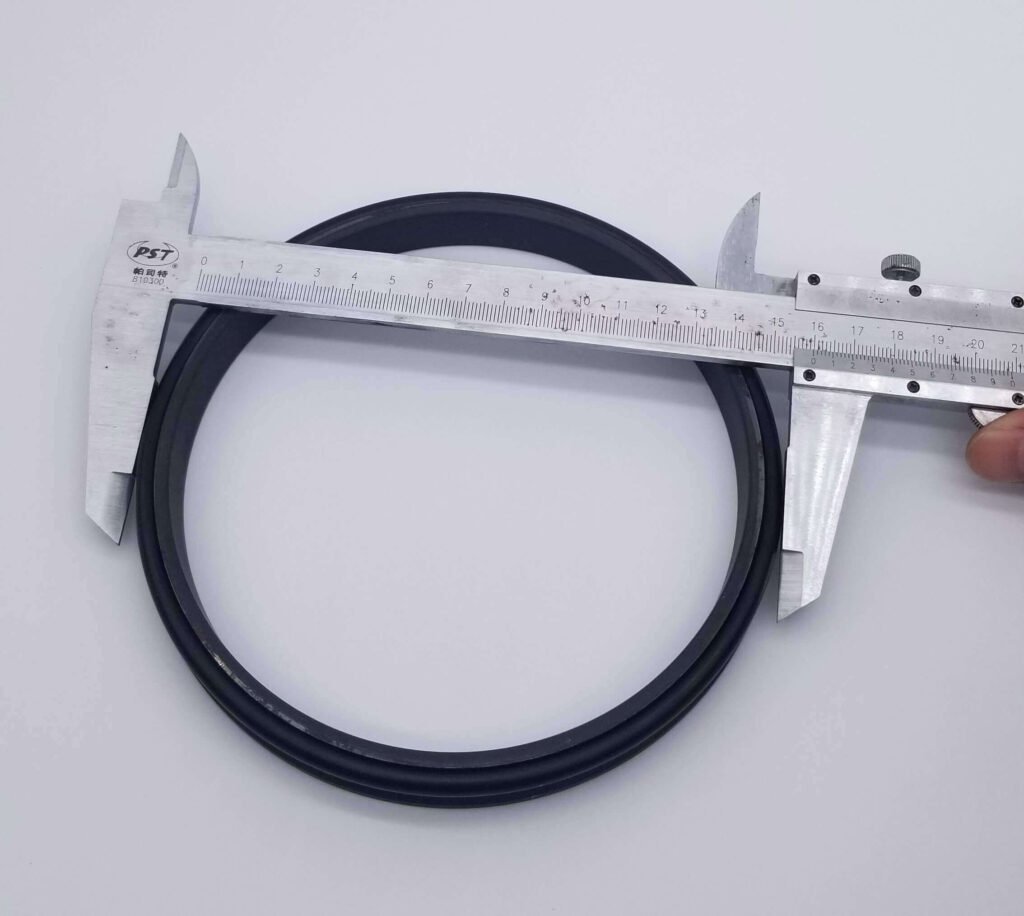When it comes to maintaining the reducer or planetary drive of machinery, the replacement of a seal group(also known as mechanical face seal,duo cone seal) is a task that demands precision and expertise. The first and most crucial step in this process is the accurate measurement of the existing seal group. In this article, we will go through the detailed process regarding how to measure a seal group before replacement, ensuring that your machinery continues to operate efficiently and reliably.
Understanding the Importance of Accurate Measurement
Before diving into the measurement process, it’s essential to understand why accuracy is so critical. Seal groups are vital components in planetary drive of machinery, responsible for preventing leaks and . An incorrectly sized replacement can lead to machinery failure, resulting in downtime and costly repairs.
Step 1: Identifying the Seal Group
Start by identifying the specific seal group that needs replacement. Machinery may contain various types of seals, each serving a different purpose. There are mainly 3 different types of mechanical face seals. It’s important to know of these features accurately, as they play a crucial role in the seal’s functionality. Note any specific characteristics or dimensions that need to be replicated in the replacement seal. Consult the equipment’s manual or manufacturer to determine the exact type of seal group you’re dealing with.



Step 2: Preparing for Measurement
Gathering the right tools is the next step. You’ll need precise measuring instruments like calipers. Ensuring that these tools are readily available and in good working condition is crucial for accurate measurement.

Step 3: Measuring the Outer Diameter of the seal group
The outer diameter is one of the primary measurements you need. Use your calipers to measure the distance across the seal group’s largest distance. It’s advisable to take this measurement in multiple locations to account for any potential wear or deformation.

Step 4: Measuring the Inner Diameter
After measuring the outer diameter, focus on the inner diameter. This measurement is crucial for ensuring that the seal fits correctly around the shaft or pipe. The same is true with the outer diameter, take several measurements to get an accurate average.

Step 5: Measuring the Combination size
To make sure that the replacement of the seal group will fit the housing properly, you have to also take the measurement of the combination outer diameter, which refers to outer diameter of metal ring together with elastomeric ring.

Step 6: Determining the Width Or Height
The width or height of the seal group are also important. These dimensions ensure that the seal fits perfectly within its housing. Measure the width from one side of the seal to the other and the height from the base to the top.

Step 7: Assessing the Condition of the Seal
While measuring, assess the condition of the existing seal. Look for signs of wear, cracking, or any other damage. This inspection can provide insight into the type of replacement seal required and whether there are any underlying issues with the machinery that need to be addressed.
Step 8: Consulting with Experts
If you’re unsure about any part of the measurement process, consulting with a professional is always a good idea. They can provide guidance and ensure that your measurements are precise, which is crucial for the effective functioning of the machinery.
Conclusion
Measuring a seal group accurately is a critical step in its replacement. It ensures that the new seal will function as intended, preventing leaks and maintaining efficiency in your machinery. By following these detailed steps, you can confidently measure the seal group and select an appropriate replacement. Always remember, precision in measurement is key to the longevity and reliability of your machinery.
When selecting a replacement seal, consider the environment in which it will operate, including temperature, pressure, and the nature of the fluids or gases it will be exposed to. These factors can significantly influence the choice of materials and design of the seal group.
After taking all the necessary measurements and noting any specific requirements, it’s advisable to double-check these dimensions. This ensures that you have not missed any critical details and that your measurements are as accurate as possible.
Once you have all the necessary information, you can proceed to select and purchase the appropriate seal group. Remember to compare your measurements with the specifications provided by the manufacturer of the replacement seal. This comparison is crucial to ensure compatibility and optimal performance.
To sum up, the replacement of a seal group is a task that requires careful preparation and attention to detail. Accurate measurements are the foundation of a successful replacement process. By following these steps and ensuring that all dimensions and specifications are accurately recorded, you can effectively maintain the integrity and efficiency of your machinery.
Regular maintenance and timely replacement of seal groups are essential practices in the lifespan of any machinery that goes with them. By mastering the method of measuring and replacing seal groups, you not only ensure the smooth operation of your equipment but also contribute to its longevity and reliability.


